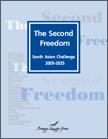Water Footprint: The Next Big Thing
 |
March, 2012
By Ilmas Futehally
|
I knew the statistics earlier. One cup of coffee requires 140 litres of water to produce- if it is grown, processed and brewed in the most efficient way. One cup of tea requires 35 litres of water to produce. But little did I know that soon, we will have all the data of water usage for all or most products. A number of diverse groups around the world are working on developing the Water Footprint, and the methodology used is just as diverse. Which one will become �€œthe�€ methodology and �€œthe�€ water footprint is yet to be seen.
The water footprint of a product is defined as the total amount of water that goes into its manufacturing process. Therefore to come back to the coffee example, it includes the amount of water that goes into watering the coffee plants and in cooling the roasters. The actual amount of water that we actually consume is therefore a very, very small percentage of this.
The water footprint of a country is associated very closely with its food imports and the concept of virtual water. Therefore it is important to look at not just the internal water footprint, but the external one as well. Further complicating the fact is that a large water footprint is not necessarily a bad thing. We need to examine where the water is coming from- if it is from a region that has abundant renewable water and efficient management of water, it is alright. The problem arises if the production is done in an unsustainable manner that causes pollution and damages the environment.
Then there is the blue, green and grey water footprint. The blue water footprint is the one most discussed so far. The green water footprint refers to the amount of rainwater that is consumed in the manufacture of a product, while the grey water footprint refers to the volume of fresh water that is required to deal with the pollutants generated in the manufacturing process. Looking at the interplay of the different colours of the water footprint, and monthly water scarcity indices, it is possible to determine whether the products are produced in water stressed regions or in regions where water is abundant.
It is expected that by mid 2012, all products in France will need to have labels with their carbon footprint. On the some product categories, they would also need to include their water footprint and biodiversity impact. However, since the water footprint involves a lot more than just what happens in the processing plants, there is a need to involve the whole supply chain and indeed the producers of the raw materials in the chain. Many, especially other European countries are watching these developments carefully to see the impact that it would have on their own economies.
Even if sustainability is the ultimate aim, it may be detrimental to start out with labelling of products at this stage. It can affect poor communities that grow raw materials for exports in water stressed areas of the world. It can affect companies that are located in arid areas. It can affect countries that are dependant on food exports. There is need for the water footprint to be understood by consumers at a level where it is more than just a metric. The complexities of the water cycle and its impact on the environment cannot be melted down to one number. It is important for consumers to make choices based to knowledge of sustainability and water management. Thus, returning to the cup of coffee that I started out with earlier, it may be better to go for it if the coffee is rain-fed from the Kenyan highlands, rather than a cup of tea grown in the dry plains nearby.
Swiss Agency for Development and Cooperation has taken a different direction. They have developed a life cycle analysis to examine the water footprint for Swiss companies based in Columbia, with special attention to the upstream supply chain and downstream consumption of water. The objective is to find ways to reduce the water footprint of the company by increasing efficiency and process innovation. The Swiss are also contributing towards developing an ISO Standard 14064 on water footprints that can set the global standard. It is being proposed that the standard should not offer a methodology for calculating offsets, but rather address positive aspects, such as the benefits of decreasing the water footprint. This may go a long way in taking the mystery out of the water footprint in way that it is more palatable both to the producers and the consumers.
Related Publications
-
.jpg&maxw=50)
Big Questions of Our time: The World Speaks, 2016
Download:Big Questions of Our time: The World Speaks _Full Report
-

-

Second Freedom South Asian Challenge 2005-2025, 2005
read more
Download:Second Freedom South Asian Challenge 2005-2025 Full Report
Related latest News
Related Conferences Reports
-

Global Challenges Conference, October 2016
Download:Global Challenges Conference Report
-

Conference on Responsibility to the Future: Business, Peace and Sustainability, June, 2008
Download:Global Security and Economy: Emerging Issues


